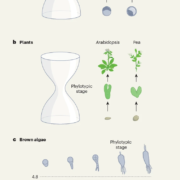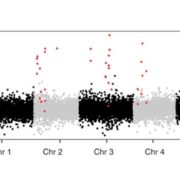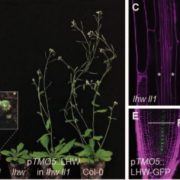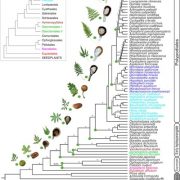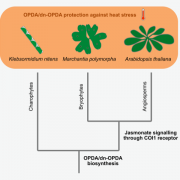A genome for gnetophytes and early evolution of seed plants (Nature Plants)
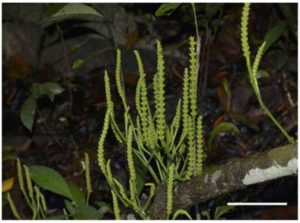 For decades, the Gnetophyte lineage has puzzled plant scientists in its correct phylogenetic placement. When taxonomists largely focused on morphological characteristics before the advent of molecular biology, it made sense to treat these apparently intermediate species as a transitional group between the flowering angiosperms and the non-flowering gymnosperms, or as early diverging angiosperms. This month, the first genome for the Gnetophytes was published belonging to a species of the genus Gnetum, G. montanum, one of the three Gnetophyte genera (the other two being Ephedra and Welwitschia). Wan et at. reported many features unique to the Gnetophytes, and argued that several specific changes must have occurred to allow for a common ancestor with conifers. These included major genome downsizing, reduction in intron size, high rates of sequence divergence eroding evidence for a hypothesised ancient whole-genome duplication shared by all seed plants, and lineage-specific expansion and reduction in certain gene families. Although the placement of the Gnetophytes close to or within the conifers may be our current best guess, many specific and complex evolutionary changes must have occurred for this to reflect the true position of this group of plants. (Summary by Danielle Prinsloo) Nature Plants 10.1038/s41477-017-0097-2
For decades, the Gnetophyte lineage has puzzled plant scientists in its correct phylogenetic placement. When taxonomists largely focused on morphological characteristics before the advent of molecular biology, it made sense to treat these apparently intermediate species as a transitional group between the flowering angiosperms and the non-flowering gymnosperms, or as early diverging angiosperms. This month, the first genome for the Gnetophytes was published belonging to a species of the genus Gnetum, G. montanum, one of the three Gnetophyte genera (the other two being Ephedra and Welwitschia). Wan et at. reported many features unique to the Gnetophytes, and argued that several specific changes must have occurred to allow for a common ancestor with conifers. These included major genome downsizing, reduction in intron size, high rates of sequence divergence eroding evidence for a hypothesised ancient whole-genome duplication shared by all seed plants, and lineage-specific expansion and reduction in certain gene families. Although the placement of the Gnetophytes close to or within the conifers may be our current best guess, many specific and complex evolutionary changes must have occurred for this to reflect the true position of this group of plants. (Summary by Danielle Prinsloo) Nature Plants 10.1038/s41477-017-0097-2



